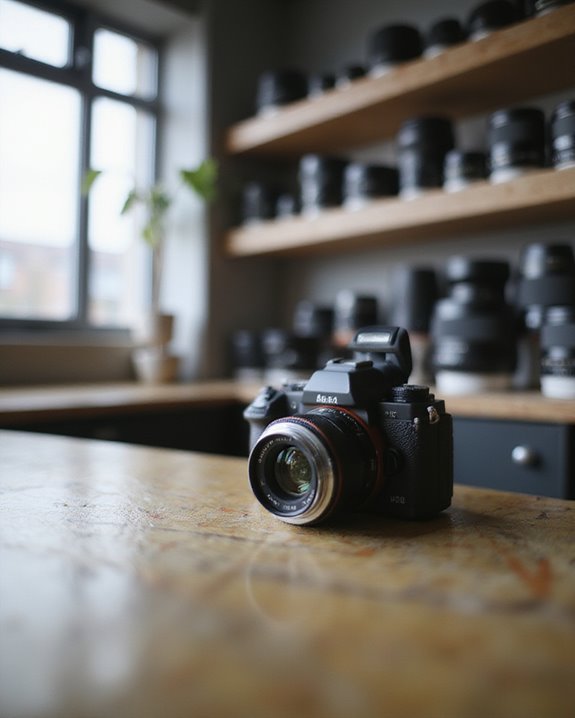Photographers can sell camera lenses through multiple channels, each offering distinct advantages. Dedicated platforms like KEH and MPB provide convenient online quotes and prepaid shipping, while retailers such as B&H Photo offer trade-in programs with bonus store credits. Peer-to-peer marketplaces including eBay and Fred Miranda forums connect sellers with knowledgeable buyers. Local camera shops provide immediate payment without shipping concerns. Properly cleaning, testing functionality, and including original packaging can greatly increase resale value regardless of the chosen selling method.
Key Takeaways
- Dedicated camera retailers like KEH and MPB offer pre-paid shipping, expert appraisals, and fair market value with 24-hour inspection turnarounds.
- Online peer-to-peer marketplaces such as eBay, Fred Miranda forums, and Photrio connect sellers with knowledgeable photography enthusiasts.
- Local camera shops provide immediate cash offers, expert evaluations, and trade-in opportunities without shipping concerns.
- Equipment rental platforms like Kitsplit and Fatllama allow photographers to monetize lenses through controlled pricing strategies.
- Photography trade shows, auctions, and community events offer in-person selling opportunities with potential premium returns for rare equipment.
Selling to Dedicated Camera Platforms Like KEH and MPB
When selling camera lenses, dedicated platforms like KEH and MPB offer structured, professional alternatives to private sales. Both companies provide online quote wizards for instant preliminary offers based on condition-based grading systems, appealing to Buyer Demographics seeking hassle-free transactions. While KEH’s 40+ years in the industry establishes credibility, MPB completes inspections faster—within 24 hours versus KEH’s longer turnaround times. These platforms also maintain relationships with manufacturers, which can facilitate access to early releases and specialized repair services for high-end lenses. Post-inspection adjustments occur with both services, with KEH frequently downgrading conditions more substantially, potentially affecting Resale Value. Both platforms provide prepaid shipping labels and payment options via check or direct deposit, eliminating upfront costs. Users generally praise MPB for quote consistency and faster processing, while KEH receives mixed reviews regarding communication and final offers. The professional grading and structured processes of these platforms provide greater trust compared to private sales.
Trading In Camera Gear at Major Retailers
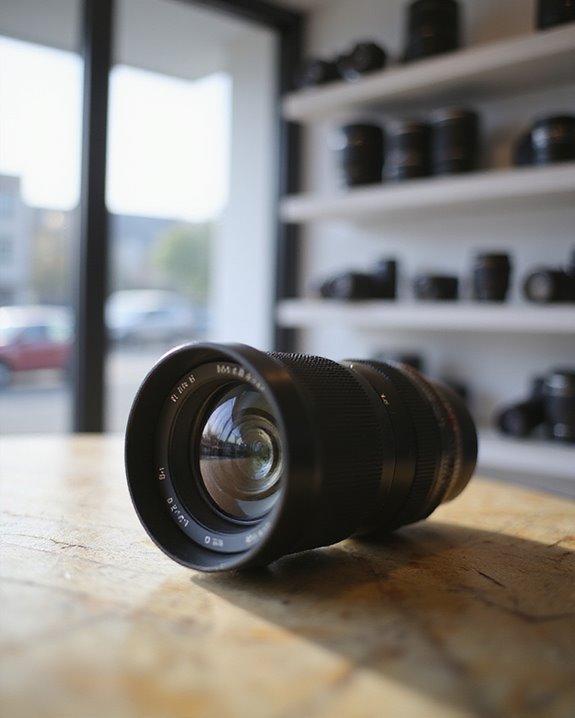
Major retailers offer an alternative approach to selling camera lenses through structured trade-in programs, complementing the specialized services of dedicated platforms like KEH and MPB. These programs typically feature instant quotes through online portals where photographers input their equipment specifications and condition details. Retailers like B&H Photo, which specializes in professional video gear, and Adorama, which accepts a broader range of equipment including drones, provide free shipping labels for secure transport to evaluation facilities. Many retailers now implement video appraisals, connecting sellers with expert buyers for real-time equipment assessment. Trade-in options often include bonus incentives, with trade credits offering 10% or greater value compared to cash payments. Photographers seeking immediate gear upgrades can benefit from guaranteed reservation holds on replacement equipment while their trade process completes. Additionally, some retailers may offer used lens options that are inspected and graded to ensure quality, providing more confidence in your trade-in.
Getting the Most Value From Peer-To-Peer Marketplaces
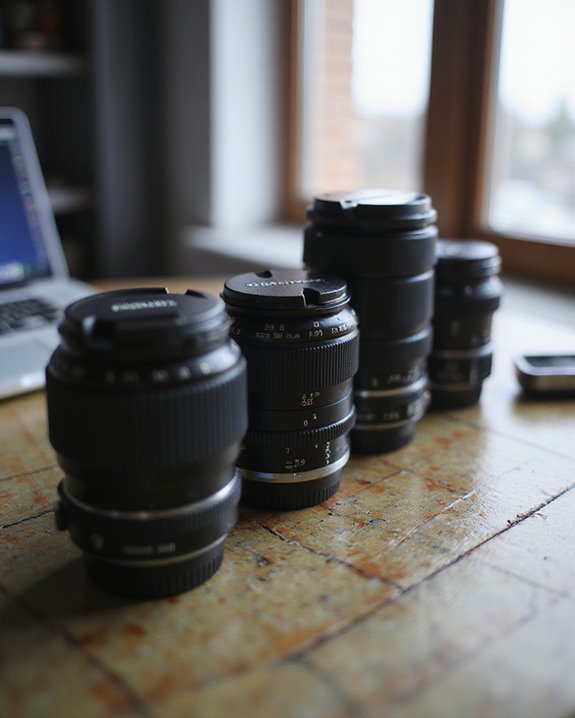
Photographers seeking maximum returns for their high-quality optics can find significant value by leveraging peer-to-peer marketplaces, which offer alternatives to traditional selling methods. Platforms like Kitsplit, Fatllama, Sharegrid, and Wedio enable equipment owners to monetize unused lenses while maintaining control over Pricing Strategies, rental terms, and equipment availability. Sellers can maximize returns by creating detailed digital listings with thorough descriptions, setting competitive rates based on equipment condition, and utilizing secure payment systems offered by these platforms. Incorporating marketplace rankings and industry presence can further boost trust and visibility among potential renters. Feedback Utilization becomes essential for long-term success, as positive reviews build seller reputation within these photography communities. By analyzing user comments and ratings, sellers can refine their offerings, improve customer service, and establish themselves as trusted providers, ultimately commanding premium prices for their high-quality camera equipment while reaching a broader audience of potential renters.
Local Camera Shops: Convenience and Immediate Payment
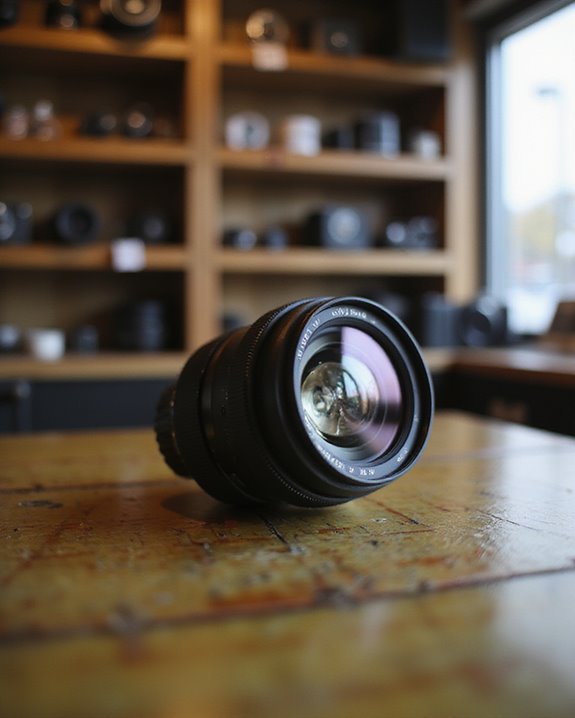
Local camera shops offer sellers a straightforward avenue for converting unused lenses into immediate cash, striking an appealing balance between convenience and fair market value. These establishments, including specialty stores like Houston Camera Exchange, provide expert local appraisals from staff who can accurately evaluate equipment condition and market demand. The selling process typically involves a quick assessment, price negotiation, and immediate cash offers without the hassle of creating online listings or arranging shipments.
This approach eliminates shipping risks while offering trade-in opportunities for photographers looking to upgrade rather than simply sell. Sellers seeking maximum value should present lenses in clean condition with original packaging and documentation, visit multiple shops for comparative offers, and research current market prices before negotiation. This preparation guarantees competitive compensation for quality equipment while maintaining selling simplicity.
Photography Forums and Communities for Direct Sales

Photography forums and communities offer a direct, peer-to-peer marketplace where enthusiasts can sell camera lenses while connecting with knowledgeable buyers who understand equipment value. Platforms like Fred Miranda Forums, DPReview, and Cameraderie Classifieds facilitate these transactions through reputation systems and real-time discussions, creating opportunities for Forum Networking beyond mere transactions.
Sellers succeed on these platforms by providing clear descriptions, quality images, and documentation of their equipment, which builds trust with potential buyers. Many photography communities host Community Events where members can showcase equipment for sale, establishing connections that lead to private transactions. While competition can be significant, these specialized communities attract dedicated enthusiasts actively seeking specific gear, making forums particularly effective for selling rare or niche lenses that mainstream marketplaces might undervalue.
Using Consignment Services for Hands-Off Selling
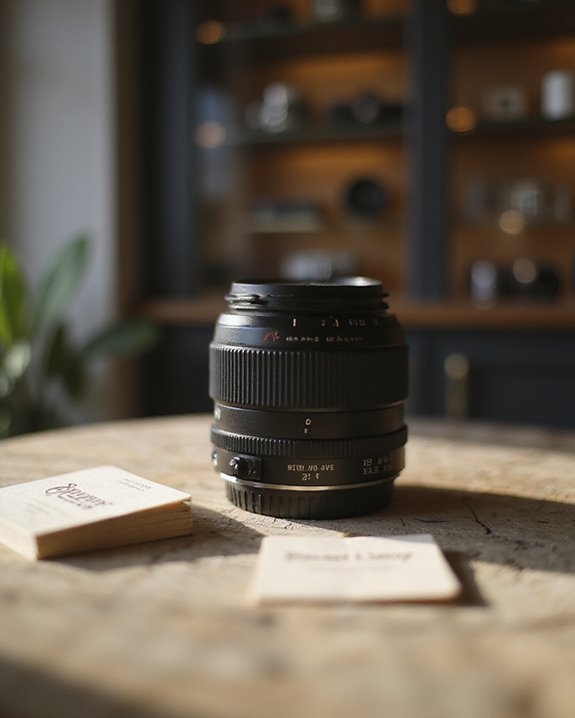
While forums connect sellers directly with buyers, consignment services offer a completely hands-off alternative for those who prefer minimal involvement in the selling process. These services handle everything from photographing and listing the lens to managing buyer interactions and shipping logistics, allowing sellers to avoid negotiation hassles entirely.
Most consignment shops operate on 90-day terms, during which they clean, inspect, and test each lens before listing it for sale. Commission rates typically range from 20-25% of the final selling price, covering marketing costs and transaction processing. Many services enhance marketability by offering warranty options to potential buyers, such as 90-day repair guarantees that increase buyer confidence and potentially command higher prices.
Payment is processed promptly after sale, usually via electronic transfer, with the final amount equaling the sale price minus the agreed commission fee.
Comparing Trade-In Values vs. Outright Sales

When deciding how to sell camera lenses, photographers face an important choice between trading in equipment or pursuing outright sales, with each option offering distinct financial implications. Trade-ins typically result in 40-50% value loss compared to retail pricing, but provide convenience and reduced transaction risks. These exchanges may also carry Tax Implications, as some jurisdictions treat trade-ins differently than sales for reporting purposes.
Outright sales through platforms like eBay or specialized photography forums generally yield higher returns but require more time investment and exposure to potential buyer fraud. Emotional Factors often influence this decision, as photographers may prefer the immediate closure of a trade-in rather than managing the uncertainty of private sales. The condition of equipment, market demand, and original purchase price greatly affect potential returns regardless of the chosen method.
Tips for Preparing Your Lenses to Maximize Value
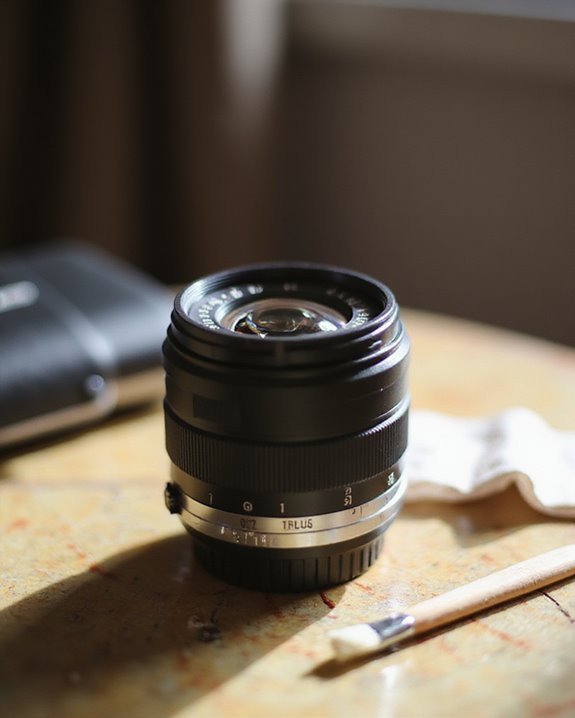
Properly preparing camera lenses before listing them for sale can substantially increase their market value, often yielding 10-15% higher offers from potential buyers. Thorough condition assessment is essential, requiring sellers to inspect glass elements for scratches or fungus, test focus mechanisms, and verify aperture functionality across all settings.
Proper Lens Storage with desiccant packets demonstrates conscientious ownership, while documenting Focus Calibration history reassures buyers about optical performance. Cleaning should employ only microfiber cloths and air blowers, avoiding alcohol-based solutions that damage coatings. When photographing lenses for listings, capture serial numbers clearly, remove protective filters to showcase front elements, and include all original accessories such as lens caps and hoods, which can command a 15-20% premium over incomplete packages.
How to Properly Ship and Package Camera Lenses
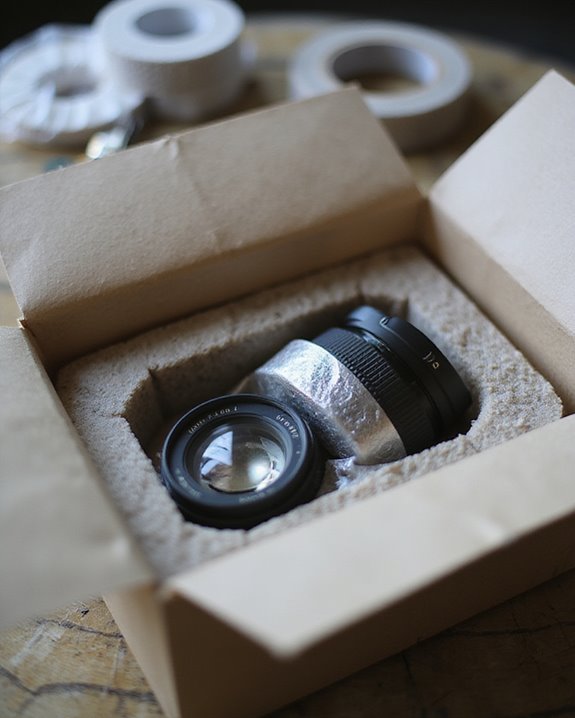
Shipping camera lenses safely requires meticulous attention to packaging details, as even minor impacts during transit can damage precision optical components. Selecting appropriate Cushioning Methods begins with layering bubble wrap in concentric circles around the lens, followed by positioning the item centrally within a double-walled box that allows 2-3 inches of padding on all sides. Empty spaces should be filled with crumpled newspaper or craft paper to immobilize the lens completely.
Weatherproofing Tips include sealing all box seams with heavy-duty packing tape and inserting silica gel packets to prevent moisture damage during transit through humidity-variable environments. Clamshell packaging provides additional moisture resistance for valuable optics. Photographing the lens before shipment and recording the packing process creates documentation for potential insurance claims, while tracked shipping with signature confirmation guarantees accountability throughout delivery.
Best Places to Sell Vintage and Collectible Lenses
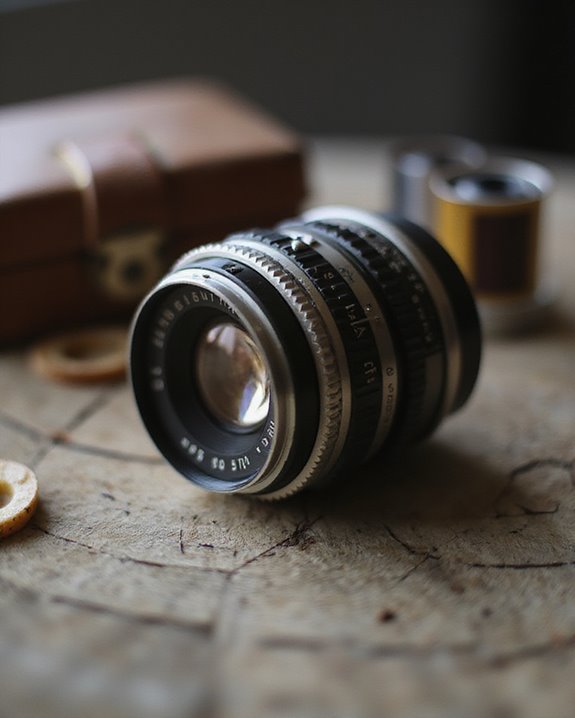
Vintage and collectible camera lenses represent a specialized market where finding the right selling platform can greatly impact both price and selling experience. Enthusiast forums like Photrio.com and Fred Miranda connect sellers with knowledgeable buyers who appreciate the history and craftsmanship of vintage optics. For premium collectibles, specialized auction houses such as Tamarkin Auction and Leica Shop Vienna often yield higher returns despite their 20% consignment fees.
Trade shows and flea markets provide unique in-person selling opportunities where collectors can physically examine rare lenses before purchase. For convenience, resale companies like KEH Camera and B&H Photo offer trade-in programs with instant quotes and free shipping, though at potentially lower returns than direct sales. eBay remains popular for its broad audience and reasonable fees, particularly for mid-range collectible lenses.
Frequently Asked Questions
Are Lens Adapters Worth Selling Separately or With the Lens?
Over 70% of photographers prefer bundled options. Selling lens adapters separately maximizes margins, while bundling increases convenience. Adapter compatibility with various systems affects pricing strategies, making both approaches viable depending on market positioning.
When Is the Best Time of Year to Sell Camera Lenses?
The best periods to sell camera lenses are before summer sales peak and during holiday demand. Pre-summer attracts travel photographers while Christmas and Black Friday generate maximum buyer activity and potentially better prices.
How Long Should I Wait Before Selling Newly Released Lenses?
Photographers should typically wait 3-6 months after a lens release. This wait period allows initial hype duration to subside while demand remains strong, optimizing resale value before significant market saturation occurs.
Can I Sell Lenses With Minor Fungus or Haze?
Like a house with hidden mold, lenses with fungus sell at steep discounts. Fungus detection during transparent selling requires full disclosure. Yes, they can sell, but with proper haze prevention documentation and substantially reduced pricing.
Do Camera Lens Warranties Transfer to the New Owner?
Camera lens warranties typically have varying transfer eligibility policies. Most manufacturer standard warranties aren’t transferable, though some enhanced plans allow one-time transfers. Warranty duration remains unchanged regardless of ownership changes.


